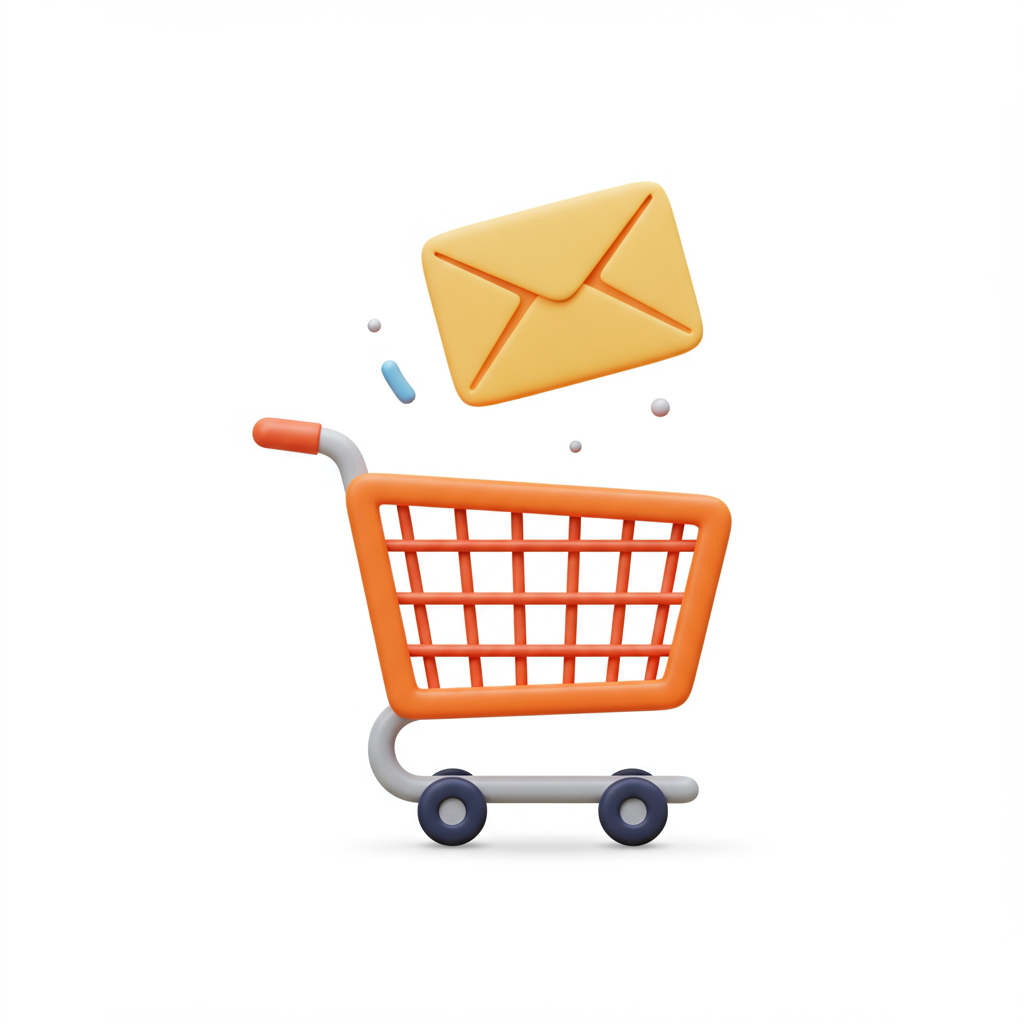Unlock Lost Revenue and Re-Engage Customers with a Powerful Email Series
As a Shopify merchant, I know the thrill of a new sale. But I also understand the frustration of an abandoned cart. It’s a common scenario: a customer browses your products, adds items to their cart, and then, for whatever reason, leaves your store without completing their purchase.
This isn’t just a minor inconvenience; it represents a significant chunk of lost revenue. Industry averages show that cart abandonment rates can hover between 70% and 80%, meaning a vast majority of potential sales never materialize.
Think about it: these customers were interested enough to add items to their cart. They’ve shown intent. They’re not just casual browsers; they’re warm leads who, for some reason, got sidetracked or encountered a barrier.
This is precisely where a well-crafted abandoned cart email series becomes your most powerful tool. It’s not just about sending a reminder; it’s about re-engaging, understanding, and gently guiding them back to complete their purchase.
I’ve seen firsthand how effective these emails can be in converting those ‘almost’ sales into actual revenue. It’s a low-cost, high-return strategy that every Shopify store owner should implement and optimize.
So, how do we turn those abandoned carts into completed orders? It starts with a strategic, multi-email approach, rather than a single, generic message. A series allows you to address different potential reasons for abandonment and offer varied incentives.
Let’s dive into the anatomy of an effective abandoned cart email series, focusing on timing, content, and best practices that I’ve found to be most successful for Shopify stores.
The first email in your series is crucial. I recommend sending it relatively quickly, ideally within 30 to 60 minutes of the cart abandonment.
Why so soon? Because the customer’s intent is still fresh. They might have been distracted, their internet might have cut out, or they simply got busy. A quick reminder can bring them right back.
The purpose of this first email is a gentle nudge. It shouldn’t be pushy or offer a discount immediately. Instead, it should simply remind them of what they left behind.
I always include a clear link back to their cart, making it incredibly easy for them to pick up exactly where they left off. Personalization, like addressing them by name and showing the exact items, is key here.
For the subject line, I keep it simple and direct: ‘Did you forget something?’, ‘Your cart is waiting!’, or ‘Still thinking about it?’ are great starting points.
If the first email doesn’t convert, don’t despair. This is where the second email comes into play. I typically send this one 12 to 24 hours after the first.
The goal of this email is to address potential objections or provide more value. Perhaps they were hesitant about shipping costs, product features, or trustworthiness.
Here, I like to incorporate social proof, such as customer testimonials or product reviews. Highlighting your unique selling propositions (USPs) – like free shipping over a certain amount, excellent customer service, or a satisfaction guarantee – can also be very effective.
You might also include a small FAQ section addressing common concerns or a direct link to your customer support. The aim is to build trust and alleviate any lingering doubts.
For the subject line, I might try something like: ‘Still interested? Here’s why you’ll love it!’, ‘Questions about your order?’, or ‘Don’t miss out on these items!’
Finally, if the customer still hasn’t converted, it’s time for the third and often final email in the series. I usually send this 24 to 48 hours after the second email.
This is where I consider introducing an incentive. A small discount code (e.g., 10% off, free shipping), a limited-time offer, or a bundle deal can provide that final push they need.
It’s important to create a sense of urgency or scarcity with this offer. Phrases like ‘Your discount expires soon!’ or ‘Only a few left in stock!’ can be powerful motivators.
Always ensure the call to action (CTA) is prominent and clear: ‘Complete Your Order Now’, ‘Claim Your Discount’, or ‘Shop Your Cart’. Make it impossible to miss.
Beyond the content of each individual email, there are overarching best practices I always adhere to. Consistent branding across all emails is non-negotiable; your emails should look and feel like an extension of your store.
Mobile optimization is also critical. A significant portion of your customers will open these emails on their phones, so ensure they look great and are easy to navigate on smaller screens.
I also strongly recommend A/B testing different elements: subject lines, CTA button colors, the timing of emails, and even the type of incentive. What works for one store might not work for another, so continuous optimization is key.
Leverage Shopify’s built-in abandoned cart recovery features, but also explore third-party apps like Klaviyo, Omnisend, or Mailchimp for more advanced segmentation, automation, and analytics capabilities. These tools can take your recovery efforts to the next level.
Remember to comply with email marketing regulations like CAN-SPAM and GDPR. Always provide a clear unsubscribe option and ensure your privacy policy is easily accessible.
In my experience, a well-executed abandoned cart email series isn’t just about recovering lost sales; it’s about building a relationship with your potential customers. It shows you care, you’re helpful, and you’re there to assist them.
It’s a proactive step that transforms a potential loss into a significant gain, directly impacting your bottom line and fostering customer loyalty.
So, take the time to set up and refine your abandoned cart email series. It’s one of the most impactful marketing automations you can implement for your Shopify store.
What do you think about this approach to abandoned cart recovery? I’d love to hear your thoughts!
By consistently optimizing and refining your strategy, you’ll see a noticeable increase in your conversion rates and a healthier revenue stream. It’s an investment that truly pays off.






